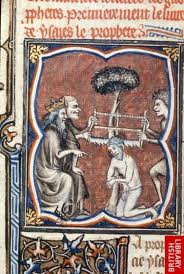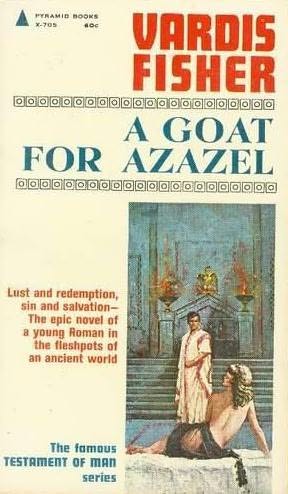I am posting here Earl Doherty’s comment — originally made on FRDB — about my recent posts on Bart Ehrman’s treatment of his book, Jesus: Neither God Nor Man.
————————-
I hope that all of you are following the postings on Vridar by Neil Godfrey relating to Bart Ehrman’s presentation of statements and arguments in my book Jesus: Neither God Nor Man. . . . What Neil has focused on in this posting (“Bart Ehrman’s false or careless assertions and quotations concerning Earl Doherty“), the first of several he plans on the same problem in Did Jesus Exist [I now notice he has just posted a second instalment], is Ehrman’s handling of my discussion of the ancients’ views of the universe and how one in particular influenced early Christian cosmology and their placement of their Christ Jesus’ sacrifice in the heavenly world. Here, as quoted on Vridar, is what Ehrman says:
Ehrman continues to repeat and underscore this aspersion — that Doherty is so simplistic as to speak of a single view of the world among ancients:
To begin with, how can he claim to have uncovered “the” view of the world held by “the” ancients, a view that involved an upper world where the true reality resides and this lower world, which is a mere reflection of it? How, in fact, can we talk about “the” view of the world in antiquity? Ancient views of the world were extremely complex and varied…
Neil points out that this is a direct misrepresentation of what I say in my book. Ehrman is discussing my page 97, which actually says (the square-bracket insertions are mine just made):
To understand that setting, we need to look at the ancients’ views [VIEWS, plural] of the universe and the various [i.e., MULTIPLE] concepts of myth among both Jews and pagans, including the features of the Hellenistic salvation cults known as “mysteries.”
But Ehrman has not simply ‘misread’ one word, the surrounding context, and in many other places in my book, contains further material like this:
From the documentary record both Jewish and pagan (and there is more to survey), it is clear that much variation existed in the concept of the layered heavens and what went on in them, just as there were many variations in the nature of the savior and how he conferred salvation.
Neil and some commenters on his posting point out that Ehrman’s language (see above) also implies that this particular “view” of the universe (the Platonic one) I present is somehow my own laughable invention, whereas any undergraduate student of ancient thinking knows full well that this was a widespread (and even pre-Plato) type of cosmology about the nature of the universe. Unfortunately, much of Ehrman’s readership will not even be undergrads.
In the same posting Neil quotes this blatant non-sequitur on Ehrman’s part:
This view of things was especially true, Doherty avers, in the mystery cults, which Doherty claims provided “the predominant form of popular religion in this period.” (This latter claim, by the way, is simply not true. Most religious pagans were not devotees of mystery cults.)
Something that is a “predominant form” is not necessarily indulged in by the majority. Ehrman’s criticism here is based on this fallacy. I have not said that a majority of pagans were initiates into the cults. Besides, the presence of the word “popular” gives a different cast to things. If I say that the predominant form of popular music over the last half-century has been “rock and roll” that does not say that a majority of the population of all ages and ethnic groups around the world have been enthusiastic about rock and roll. Ehrman exhibits serious logical deficiencies here.
On the “view”/”views” matter, Neil suggests that Ehrman may have been “more careless than dishonest,” while one commenter puts it “we must first assume carelessness and not malice”. (Dishonorable or incompetent, take your pick.) But I think this is bending over backwards unjustifiably. It is admittedly hard to believe that Ehrman could have deliberately misrepresented my words, consciously falsifying my arguments in order to put me in the worst possible light. But what is the alternative “carelessness” due to? Continue reading “Earl Doherty’s comments on my posts about Ehrman’s treatment of his book”




 In his
In his